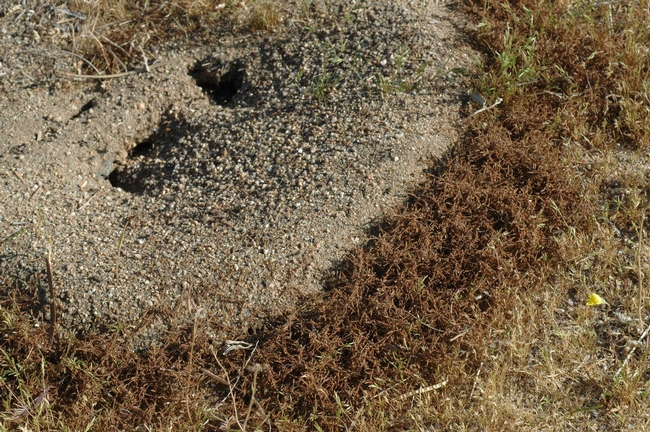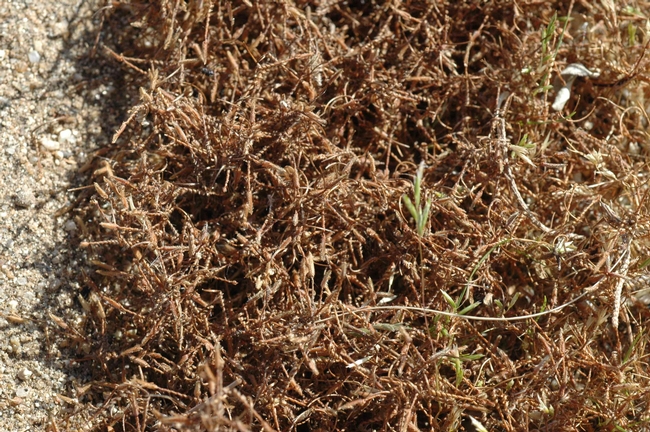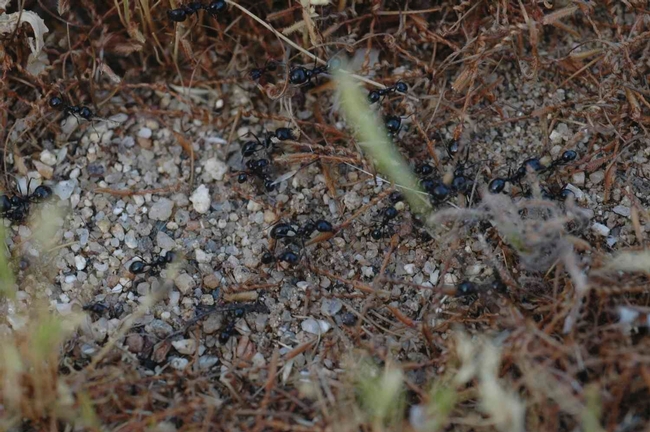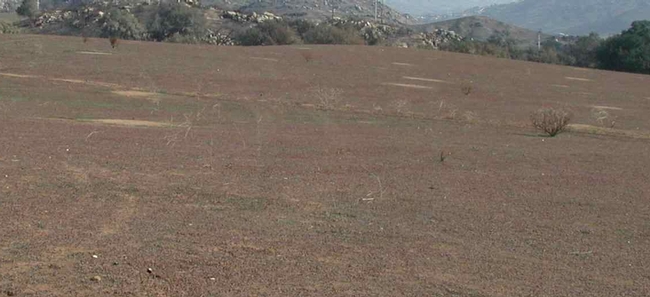While conducting a field experiment testing herbicides for control of sahara mustard in Borrego Springs in 2011, out of a corner of my eye I saw a ring of rusty brown around an ant hole.
Being curious I looked closer. It was an organized mound that was maybe 1 inch high and 3 inches across of redstem filaree (Erodium cicutarium) fruit. It was exclusively filaree, nothing else.
So I explored a little more on my knees and saw these small black ants a foot or so away on a well-beaten trail. Most of the ants had a filaree fruit in its mouth. I don't know the species of ant, but a quick Google search suggests that it is a species of Messor a harvester ant common in the desert. Harvester ants collect seed or other plant material and store it in granaries, but I don't know in this case if the mound is the actual granary or if the seed are going to be moved into the nest for storage.
Filaree fruit is a seed and the still-attached style that curls tightly as it dries, tumbling the seed around and, if lucky, getting the seed into the soil. I still remember my Mom showing my brothers and me how the style curls if you pick off the fruit at the right time and separate the individual segments (look for green fruit clusters that seem mature, pull them apart and the style will curl in about a few minutes).
So why were the ants interested in filaree? I haven't found an exact answer on-line, but it is probably related to the nutritional value of filaree. Young filaree leaves have very high protein content, similar or higher than legumes at the same stage of growth (George et al 2001). As filaree matures and dries down the protein content of leaves diminishes rapidly, so I think it is likely that the protein is going into the seed. I know horse owners that regard filaree as one of the most favored forage plants for their animals.
Another ant/filaree story comes from the Barnett Ranch Reserve near Ramona in San Diego County. The photo below was taken in December 2003, about 2 months after the devastating Cedar Fire swept through the area. The reddish color on the ground is filaree seedlings. As in the above story, the bare circles in the area caught my eye. These bare circles are called ant discs, 1-2 meter diameter areas around harvester ant (maybe a Pogonomyrex species) nest openings. The ants cut off any seedlings that come up in proximity of the nest opening, probably to remove vegetation that predators, like horned lizards, can hide in. They may also use the harvested seedlings as food.
So the ants are doing weed management that we can appreciate. I just wish they would eat a lot more.



